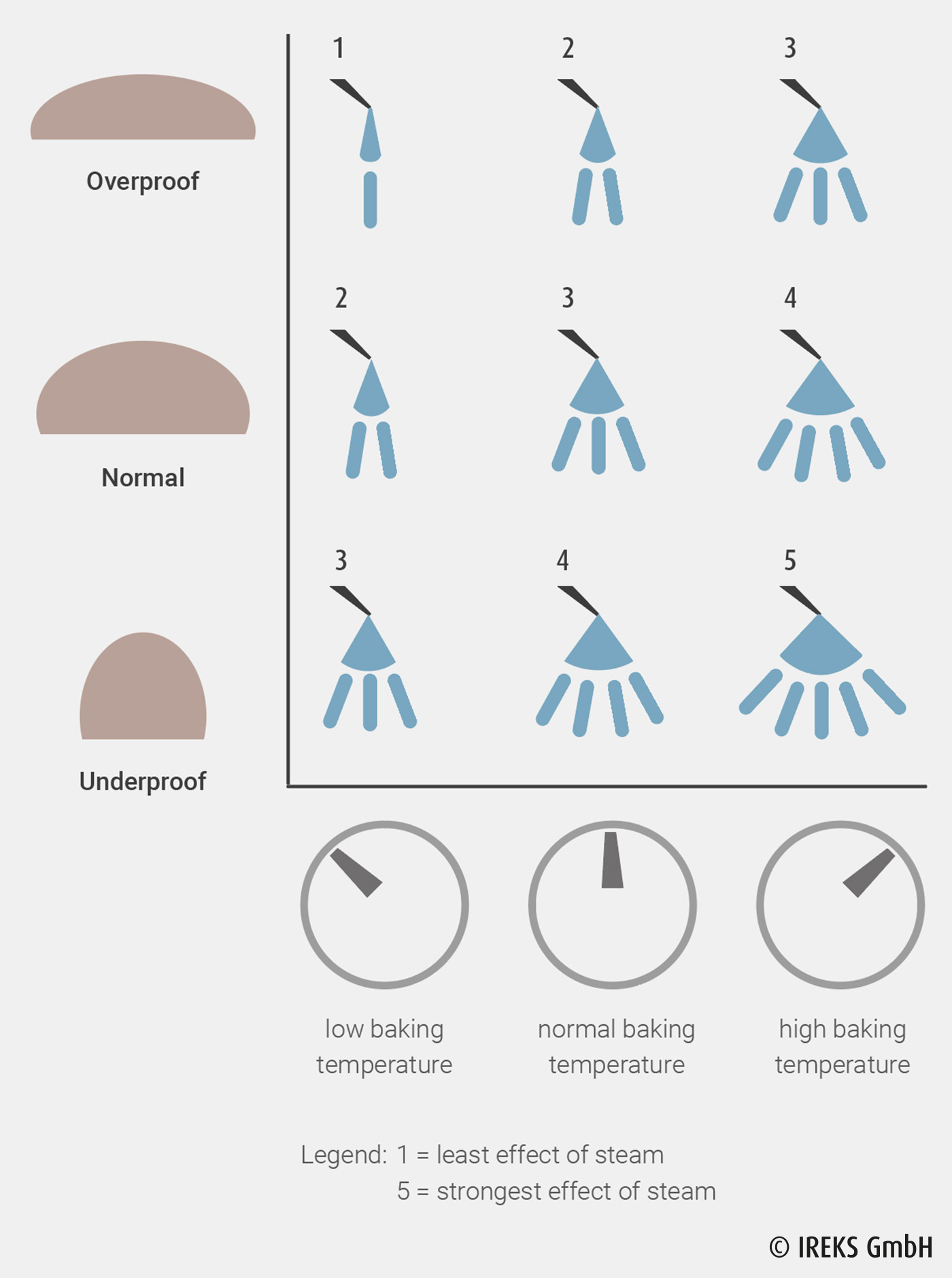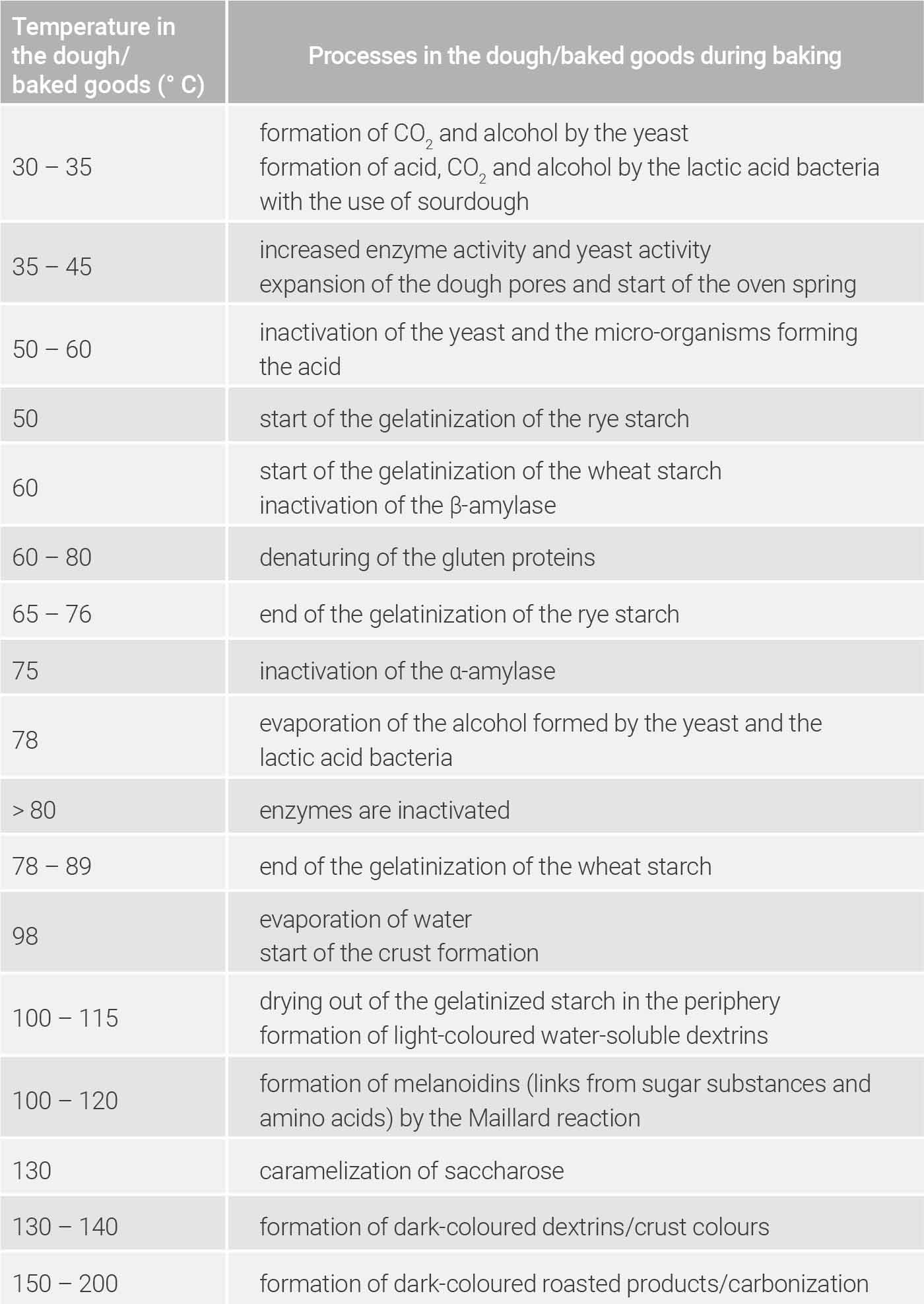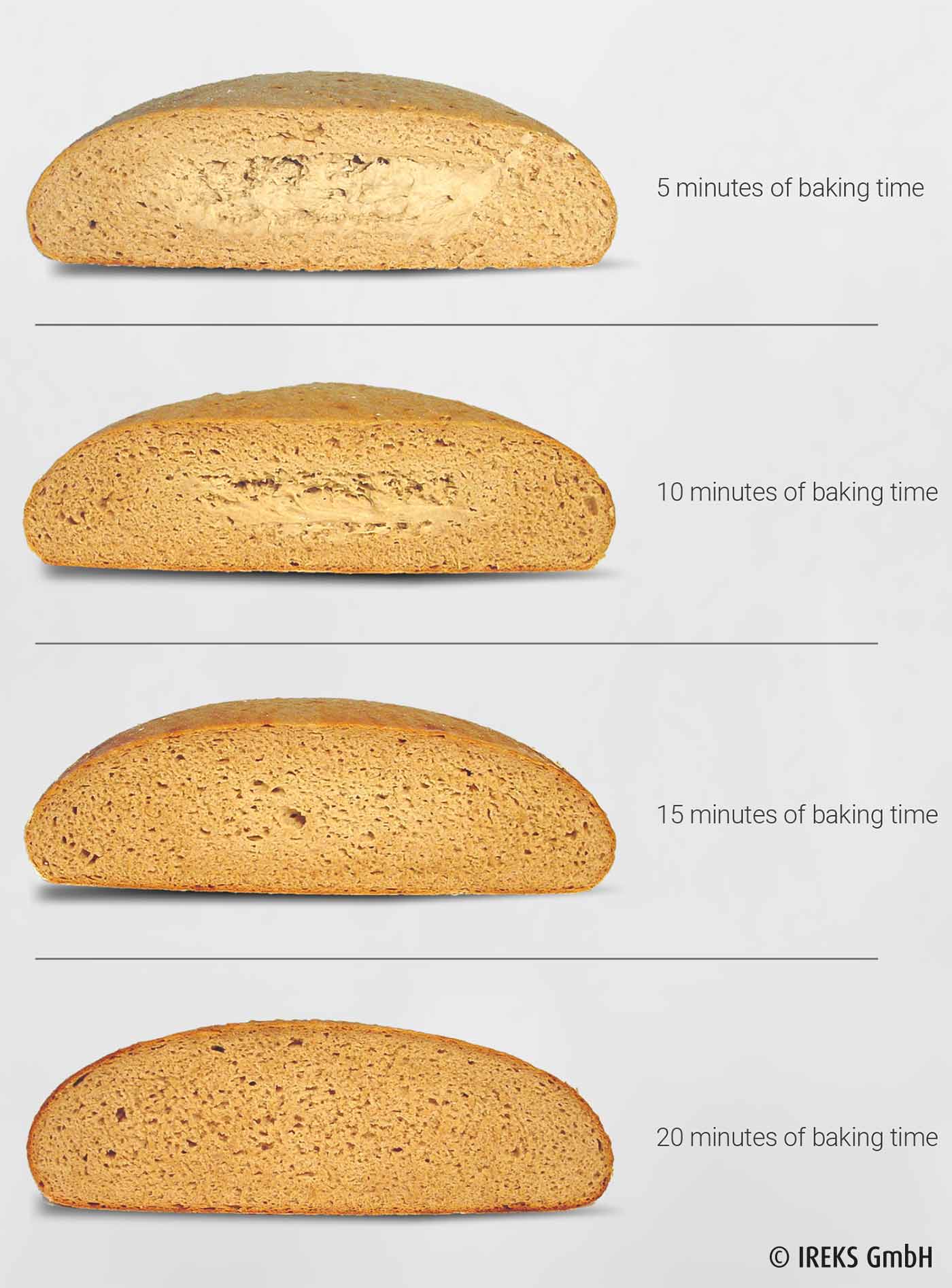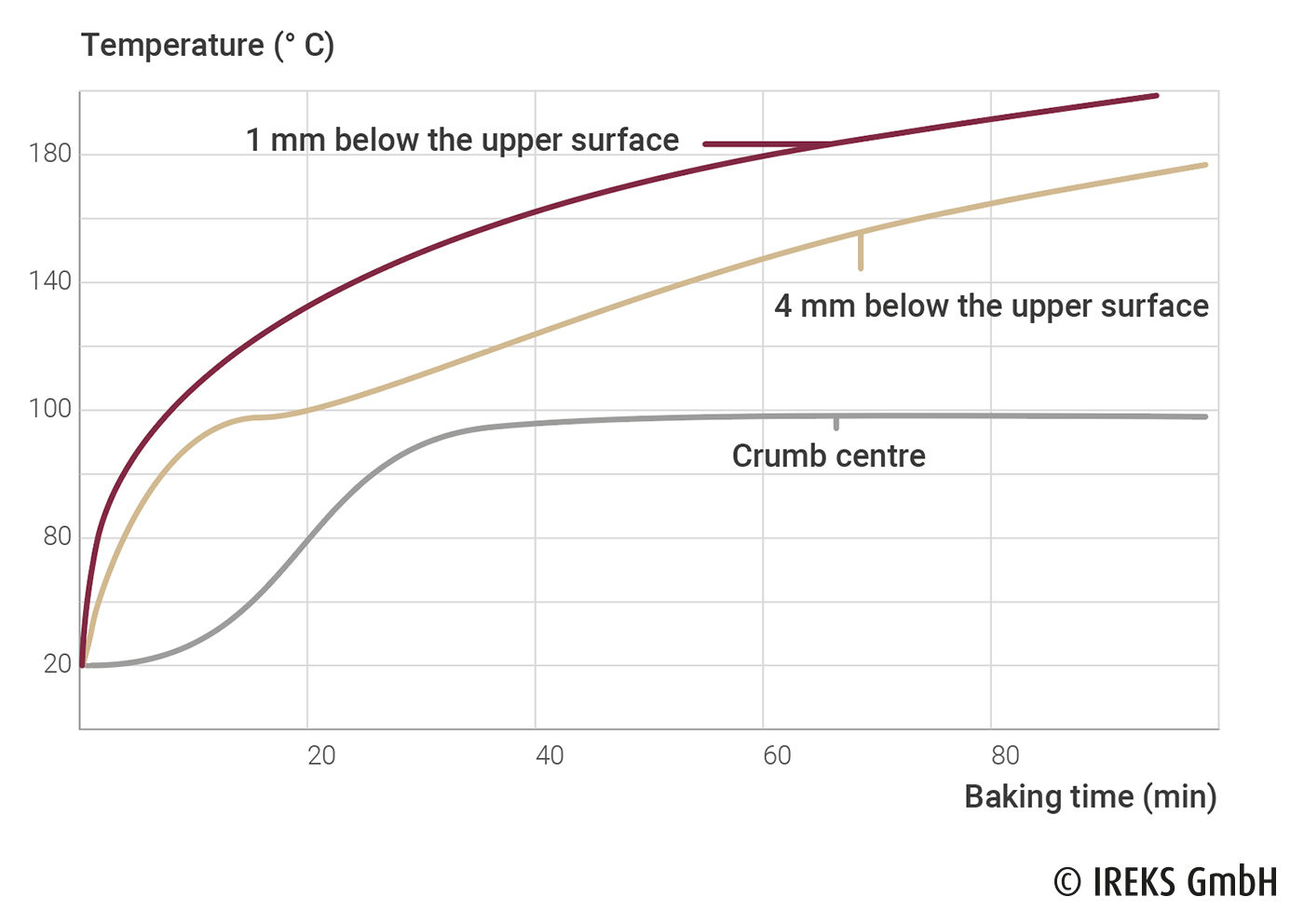During the baking process, the heat of the oven penetrates the dough piece from the outside to the inside. The transformation processes initially take place in the peripheries, where a stable crumb forms from the outside to the inside. The still damp and elastic upper surface at the beginning gradually becomes a firm crust.
At the start of the baking process, the steam has a significant influence on the dough piece during heat transfer. By condensing the hot steam on the upper surface of the dough piece, a rapid heating of the upper surface of the dough piece takes place. At the same time, the condensing steam ensures that the upper surface of the dough remains extensible and elastic for a longer time, whereby the volume of the dough piece can expand uniformly.
Depending on the exposure time and the amount of steam, a uniform or rustic crust crack can be obtained. In the case of both rye bread and wheat bread, steam is given. In contrast to wheat bread, the steam has to escape once again after a short time in the case of rye bread and mixed rye bread, so that a stable crust can form. If the steam is not allowed to escape, then tears in the crust can appear. Should baked goods be baked without steam, they then tend to tear open irregularly. This can also be the aim in some types of baked goods.
The amount of steam depends on several factors. Over and above the utilization of the oven, the addition of steam has to be adjusted to suit the oven temperature and the state of fermentation of the dough pieces. Dough pieces with a short fermentation state require more steam to still achieve a good volume of the baked goods, whereby, on the other hand, very mature dough pieces require less steam as the volume of the baked goods would otherwise be too large and the baked goods would be given a flat baked goods shape.
In the case of a too low oven temperature, the addition of steam has to be reduced, as this lowers the temperature in the baking chamber even more. If the oven temperature is too high, the addition of steam can be increased slightly. The link between the state of fermentation, the baking temperature and the amount of steam is shown in illustration 13.1 (cf. Schünemann et al. 2016).
Over and above the heat transfer, the steam is also important for the shine of the baked goods. Are baked goods produced without steam, they are then given a matt and dull upper surface.
In the course of the baking process, various processes take place in the dough/baked goods which sometimes overlap. Depending on the temperature in the dough or the baked goods respectively, the processes shown in table 13.1 can be described during baking.
To make the processes occurring in the dough/baked goods clear, the following pictures show bread which has been taken from the oven after 5, 10, 15 and 20 minutes of baking time, sliced and photographed. The bread is mixed rye bread 80/20 with a scaling weight of 1.700 kg. After 20 minutes of baking time, the gelatinization of the starch and the formation of the crumb have developed so far that a clean cross section of the still oven-hot bread was achieved. To obtain sufficient elasticity of the crumb and suitability of enjoyment of the bread, the bread has to be baked for a further 50 minutes, however.
In illustration 13.3, the courses of the temperature in the centre of the crumb, as well as at 1 mm and 4 mm below the upper surface of the baked goods, are shown depending on the baking time. In the centre of the crumb, almost 100° C have been reached after roughly 40 minutes of baking time. The temperature in the centre of the crumb does not rise any further, as the total water in the crumb would first have to evaporate. In the outer areas of the crust, the temperature continues to rise towards the end of the baking time.




